Q&A – Ask Neil: June 29, 2023
(Please read these instructions carefully.)
Before you post your question, please look at recent issues to see if someone else has already asked it. You might find your answer there.
How to submit your question…
(Note: You may need to allow a pop-up window to come up in order to get the link for sending your photo(s). If you have already sent your question and didn’t see the pop-up window, please don’t submit your question again. Click here to send your photo(s). This is only to send photo(s) for questions that have already submitted. New questioned sent to this e-mail address will not be answered.)
- Click the link provided below to post your question. After you submit your question, a new window will pop up giving you the address to which you can e-mail a sharp, high-resolution photo to accompany your question. Please do not send thumbnail photos in case I need to zoom in to see things.
- Click here to post your question.
- Please only post your question one time. We can only accept a set number of questions each week, and when we get duplicates it costs other people their chances.
- One question per reader, please.
- Please use this only for posting questions – not for standard emails.
- Watch for your answer in the following week’s e-gardens.
- I choose those of greatest general interest. For example, plant IDs seldom make the cut.
- I must have your first name or initials.
- I must have your city or county. (Texas is a very large state.)
QUESTION 1
WHY DON’T MY CRAPE MYRTLES BLOOM? THEY’RE IN FULL SUN.
Question: Why don’t my crape myrtles bloom? They’re 8 years old and in full sun. Tanya M., Springtown, Parker County.
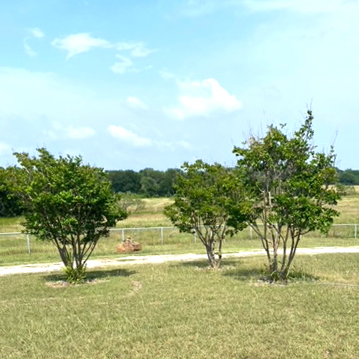
Answer: As a founding member of The Crape Myrtle Trails of McKinney Board for almost 25 years, I’ve worked with perhaps 40,000 plants over that time. Crape myrtles need three basic things to flower to their maximum potential. (1) Full sun. We can check that one off. Yours are obviously getting that. (2) Ample water. I’m not sure about this one. This year has been fairly good for rainfall, but there have also been dry times. (3) Nitrogen. Crape myrtles bloom on new growth. Your plants do not appear to have grown very much this spring. It’s rather late to push them this year, but you might still try applying an all-nitrogen lawn-type food on them along with a thorough and deep soaking. Next year start feeding them in late March, again in mid-May or early June and again in late summer. Water deeply a couple of times a week. Give that a try for one season and see if it doesn’t make a marked change in their flowering.
QUESTION 2
SHOULD I PRUNE MY CLEMATIS BACK AGAIN THIS YEAR?
Question: You suggested that I prune my clematis that was almost dead back to 18 inches at Thanksgiving last year. I did, and it came out and bloomed beautifully this year. Should I do it again this year? Dorothy C., Grayson County.
Answer: I can’t remember your specific question. If it was sweet autumn clematis, yes, it should be pruned after the first hard freeze every year. But you mentioned that your plant has already bloomed well this year, so it must have been some other species (a spring-flowering one). In that case, the best time to prune would be immediately after your plant blooms in the spring. In that latter case you would probably do a lighter job of pruning now that its vigor has been restored.
QUESTION 3
WHAT IS WRONG WITH MY LAWN?
Question: We had new sod planted last May. It was slow to green up this year, and there are many gray patches that are like straw. My lawn care company said it is red thread fungus and recently applied a fungicide. Do you agree? Is there anything else we should do? Jeff S., The Colony.
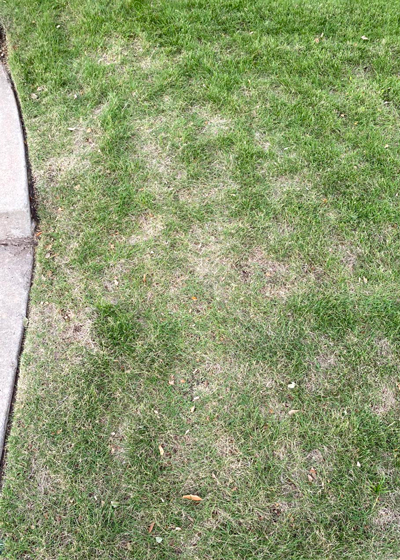
Answer: If they sent a sample to a diagnostic lab and came back with red thread confirmation, I guess that would be correct, especially if the very conspicuous red thread-like growths were evident in the turf. But it’s more common with ryegrass and bentgrass, neither of which is in your photo. This looks more like the much more common (to Texas) take all root rot.
QUESTION 4
WHAT IS CAUSING THESE LEAVES ON MY PINEAPPLE GUAVA TO CURL?
Question: We planted these pineapple guavas in April 2021. They’re doing well except for this one branch. What might be causing these leaves to curl? Dory D., Cypress, Harris County.
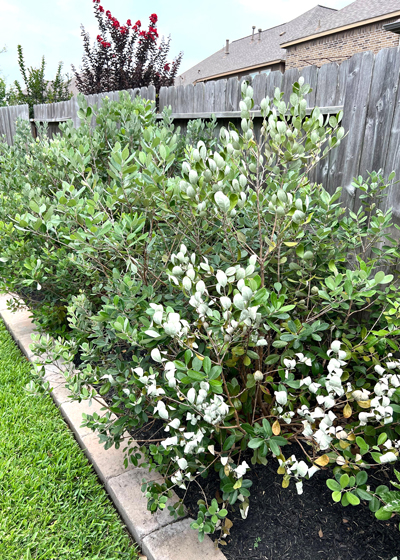
Answer: I can’t tell. My best guess without additional information would be possibly some kind of damage to that branch that caused it to crack. Second possibility: a drift or wash of some type of herbicide. Watch closely to see if adjacent leaves show any signs of damage. It may stop without spreading.
QUESTION 5
CAN FIRE ANTS CONTROL CRAPE MYRTLE BARK SCALE?
Question: My crape myrtle had lots of bark scale. Fire ants moved in and seemed to be destroying the scale. After three days they were gone. There were never any aphids and there was no honeydew on them. The photo is post-fire ants. John S., Gunter, Grayson County.
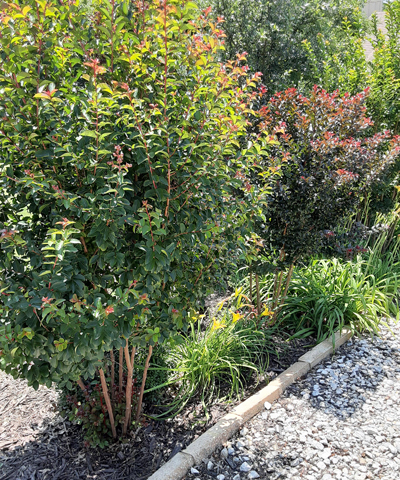
Answer: Fire ants do odd things. It’s my unprofessional guess that they’re why we no longer have many horned frogs and tarantulas and maybe even chiggers where fire ants are now common. But I’ve never heard of their feeding on scale insects, especially those up on trunks of crape myrtles. I’ve watched a lot of crape myrtles for bark scale and I’ve never noticed them there.
QUESTION 6
CAN I TRIM THIS AUTUMN BLAZE MAPLE TREE?
Question: Can I trim this Autumn Blaze maple tree? It’s in its fourth year and it has several lower limbs that have really taken off. It’s become difficult to mow beneath them. When would be the best time? Joe H., Ardmore, Oklahoma.
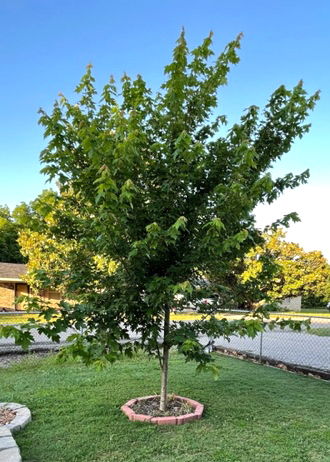
Answer: Yes! You can do so now. One warning I would give is that you remove one or two branches initially, then look at the tree carefully before you cut any more. You can always remove another branch later, but you can never put one back. I see trees that get “limbed up” way too high, especially in commercial landscapes. But what you want to do is just fine.
QUESTION 7
WHAT IS WRONG WITH MY 21-YEAR-OLD OAKLEAF HYDRANGEA?
Question: I have a 21-year-old oakleaf hydrangea. It’s always had huge white blooms, but this year they were quite small and green. The leaves are wilting and dying one branch at a time. I see no insects. Susie A., Plano.
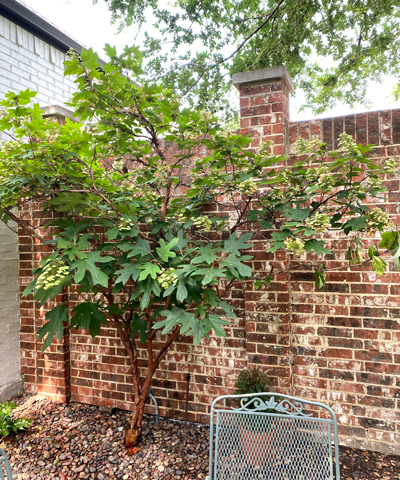
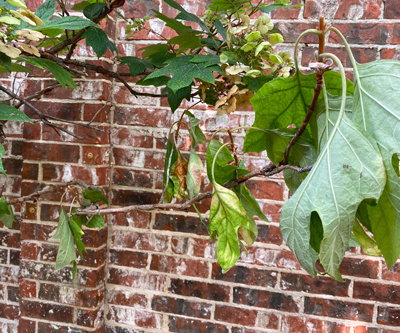
Answer: This was a poor year for oakleaf hydrangeas in general. Mine didn’t flower very well, either. As for the one portion of your plant that is wilting, I suspect it’s been pruned enough times that it’s run out of steam. I see a lot of 90-degree turns in the branch. They suggest that it’s been trimmed many times. Each time that we do that, we rob the branch of a little more of its vigor. Finally, in the off chance, I will say that I have lost one of my oakleaf hydrangeas over the years to a soil-borne fungus known as cotton root rot. It, too, died a portion at a time. That was unusual, since cotton root rot normally kills an entire plant at the same time. Keep that in the back of your mind in case you need it. There is no cure for it if that’s what’s involved. I hope it isn’t.
QUESTION 8
WHAT IS WRONG WITH MY JAPANESE MAPLE?
Question: What is wrong with my Japanese maple? It’s more than 10 years old. It looked great last fall and earlier this spring, but now not so good. The only difference is that now it looks like some of the bark has been chewed. John M., Lewisville.
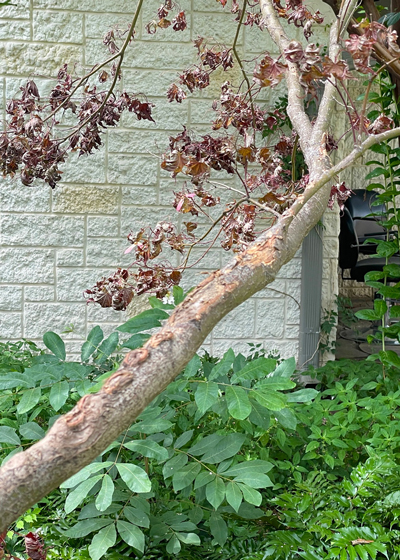
Answer: This branch has been chewed time and again. You can see all the spots where it has attempted to heal itself in years past. Some are hardly noticeable any longer. As you’ll see in the next question, squirrels and Japanese maples are not always the best of friends.
QUESTION 9
CAN I SAVE THESE JAPANESE MAPLES AFTER SQUIRRELS HAVE CHEWED OFF SO MUCH OF THE BARK? I’M WORRIED THEY’RE GOING TO DIE.
Question: Squirrels ate off so much of the bark from my Japanese maples. I’m afraid they’re going to die. What can I do to save them? Cathy B., Preston Hollow, Dallas County.
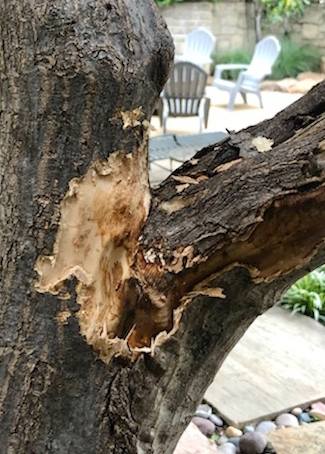

Answer: This is serious damage. The tissue that is just inside the bark is the phloem. It’s a cylinder that conducts manufactured sugars from the leaves down to the roots. When the phloem is lost the roots die. Inside the phloem is the cambium, the tissue that generates new phloem to the outside and new xylem (the “wood” of the trunk) to the inside. Squirrels’ damage tears away both the phloem and cambium and can indeed cause loss of major limbs and even entire trees. However, there is nothing you can do to overcome that damage. Do not apply pruning sealant and do not try to peel the loose bark away. Hopefully the tree will be able to grow new bark across the wounds. Only time will tell. Applying a sticky product called Tree Tanglefoot will help discourage future damage, but apply it only to healthy bark, not to the wounds.
QUESTION 10
WHAT IS CAUSING THE RUST-COLORED STAINS ON MY SAPODILLA BUSH’S LEAVES?
Question: My sapodilla bush has rust-colored stains on its leaves. Any idea what this could be? Brian K., Thailand.
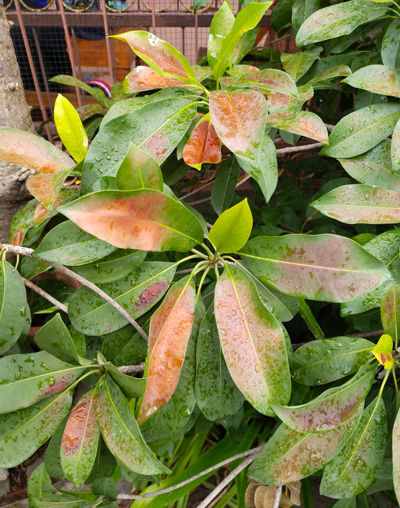
Answer: Your photo posted several days after your question. I had already done what homework I could, but I had composed a reply saying that I didn’t know enough about the soils and climate of Thailand and not much more about this tropical plant. But when I saw the photo I wadded that electronic answer up and am now willing to say that this looks like sunburn. Notice that the browning is primarily on the top-most leaves that are as exposed as the top of my head to solar exposure. This can happen when a plant is moved or when a prior source of shade is removed. It could also happen if the leaves were exposed to the sun’s burning rays while they were moist. I notice that the leaves appeared to have moisture again when you took the photo. This is not the rust fungus I surmised from your description. If there’s a way to get it a little bit of shade from the afternoon sun that might help. Otherwise it may acclimate and put out new leaves that are better adjusted. This is essentially a Texas-based gardening publication, but hopefully I’ve helped at least a little.
